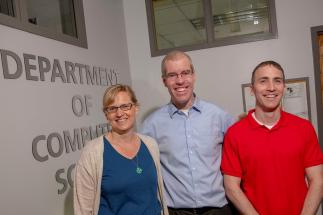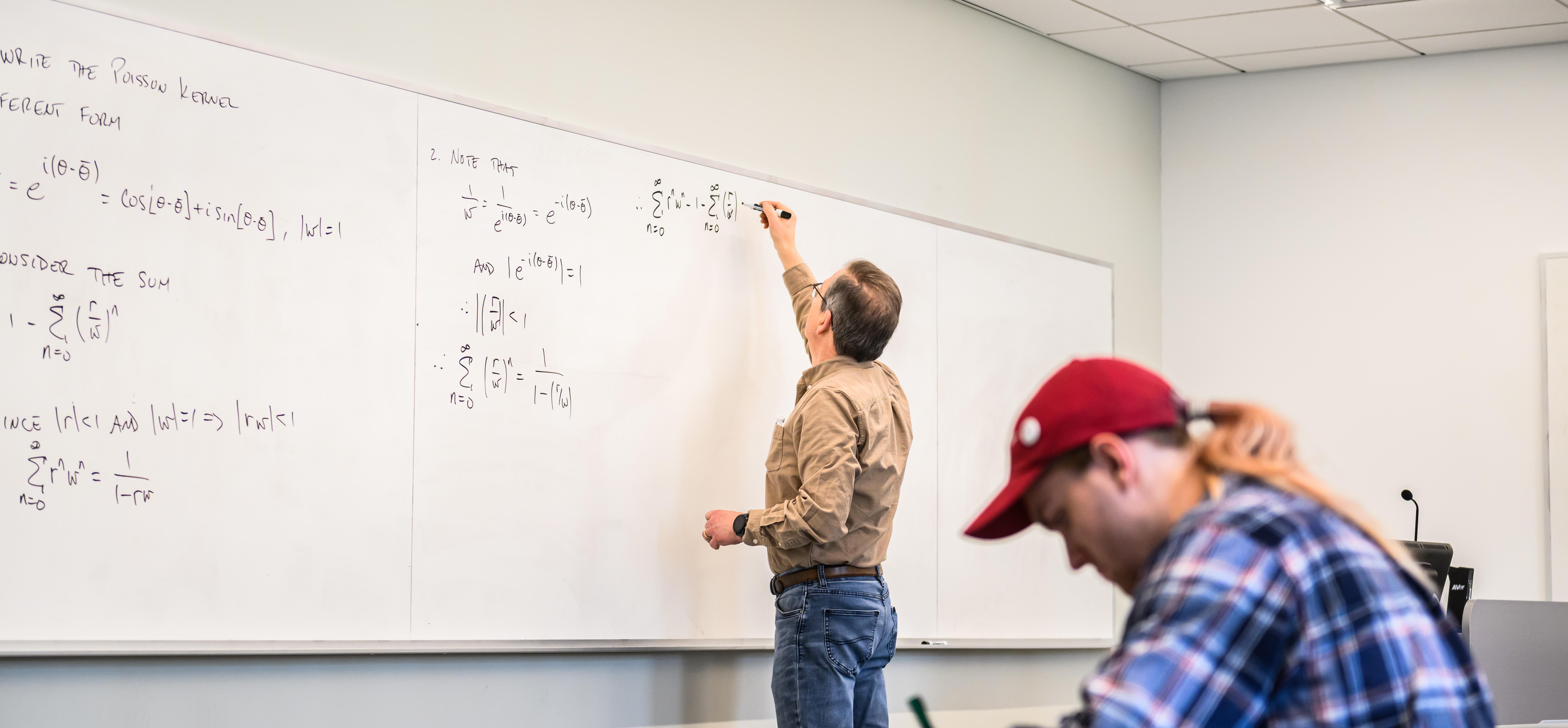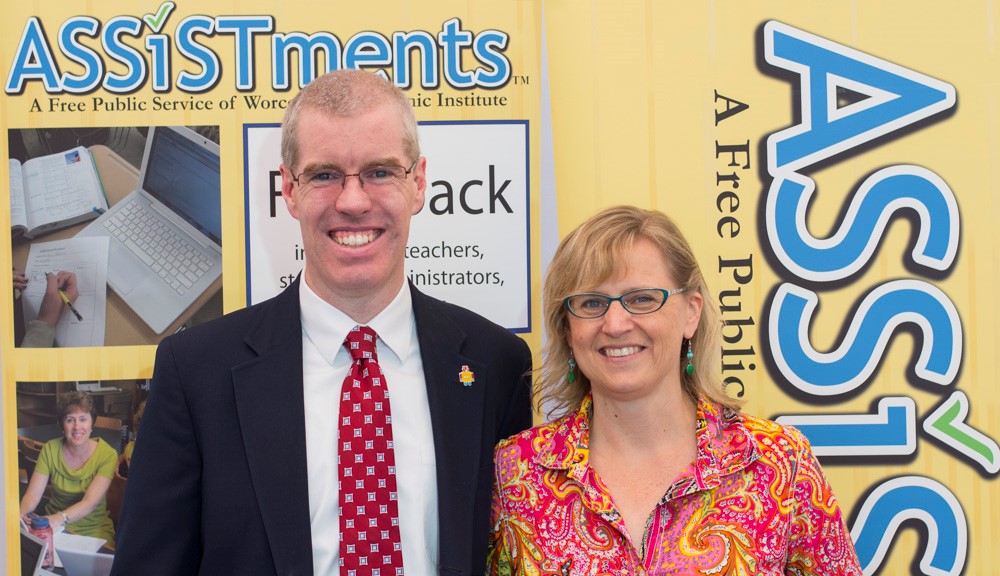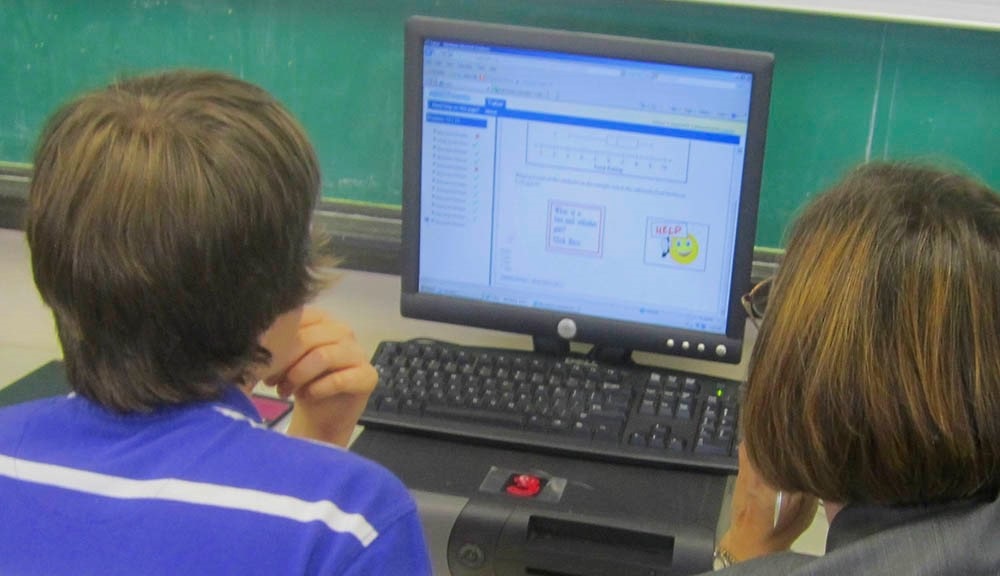The Worcester Polytechnic Institute (WPI) researchers who developed ASSISTments, an online math tutoring system, have partnered with Lesley University’s Center for Mathematics Achievement on a $744,317 grant from the National Science Foundation (NSF) to create a tool that will support the infrastructure of Open Educational Resources (OER) and help middle school teachers provide students with feedback on their mathematics homework in a faster, more effective manner.
OER curriculums, like Illustrative Mathematics and EngageNY, are popular and have been used by math teachers across America. Called DRIVER-SEAT (Dialogue Reinforcement Infrastructure for Volitional Exploratory Research—Soliciting Effective Actions from Teachers), the new tool could help teachers save time while increasing the quality and timeliness of feedback messages to students. The tool will be woven into ASSISTments, which is a free program developed by WPI computer science professor Neil Heffernan to give students feedback on their homework and help teachers see how the students are doing individually and as a class.
DRIVER-SEAT will use technologies employed by Google’s Smart Reply, which uses machine learning to let users send predictive or “suggested” human-like messages when responding to an email, rather than spending time crafting their own. DRIVER-SEAT will give teachers a fast, effective way to respond to their students’ online homework in an age where teachers sometimes don’t have the time to provide detailed feedback to their students.
As part of the project, which is under the direction of Heffernan and WPI computer science professor Jacob Whitehill, teachers will use a prototype to create a library of approved messages that they can choose to send to their students. Based on a student’s performance, three appropriate responses will be suggested, just as with Google’s Smart Reply. Teachers will still have control over which messages are shared with students, rather than letting computers send automated responses directly to their students.
For example, if a student rushes through an assignment, the computer might suggest a message that says, “I see it took you only 30 seconds to solve this problem. The average time for students in our class was 4 minutes and 20 seconds. Please take your time.” Or, if a student did well on a homework assignment, the teacher might select, “It looks like you really learned a lot from this homework. Good job on putting in the effort early on because it looks like it paid off by the end.”
Heffernan said, “We think that many EdTech products have been shown to possibly exacerbate achievement gaps. That is, the highly motivated students succeed with them, but the lower knowledge students don’t. We need to make sure we support teachers so that students who are likely to fall behind get the necessary encouragement. This is not about using artificial intelligence to talk to students. It’s about helping teachers help their students.”
Cristina Heffernan, who created ASSISTments with her husband, said, “We need to let teachers do what they’re good at, which is talk to students, while we let computers process all the data and present that to teachers in a way that makes sense for them.”
Hilary Kreisberg, assistant professor of mathematics education and director of the Center for Mathematics Achievement at Lesley University, said, “I’m excited to be part of this project. OER is the next generation of curriculum for teachers—it is easily accessible and free. School districts all over the country are beginning to transition to OER, and it’s important that scholar practitioners and educational researchers work now to enhance the user-experience. We can make them even better if we develop automated feedback that students can receive immediately to inform their problem solving process.
“Additionally, this development will enable teachers to utilize instructional time more effectively instead of spending the first 10 to 15 minutes of class reviewing homework. We believe teachers should remain in the driver’s seat, despite how far technology will go. This tool allows teachers to remain in full control.”
The team is currently recruiting teachers of sixth, seventh, and eighth grade mathematics who are using ASSISTments to receive funding to write feedback messages for their students in response to their homework. (Contact Brittany Gonio at mathachievement@lesley.edu for more information.)







